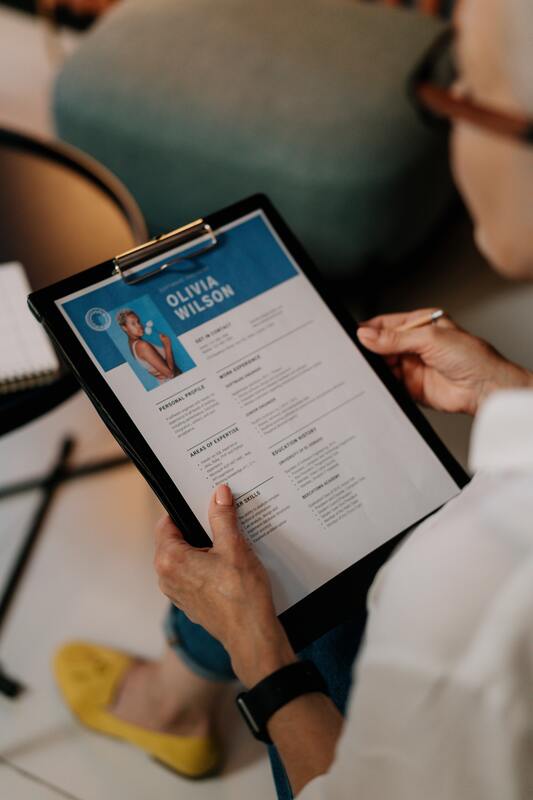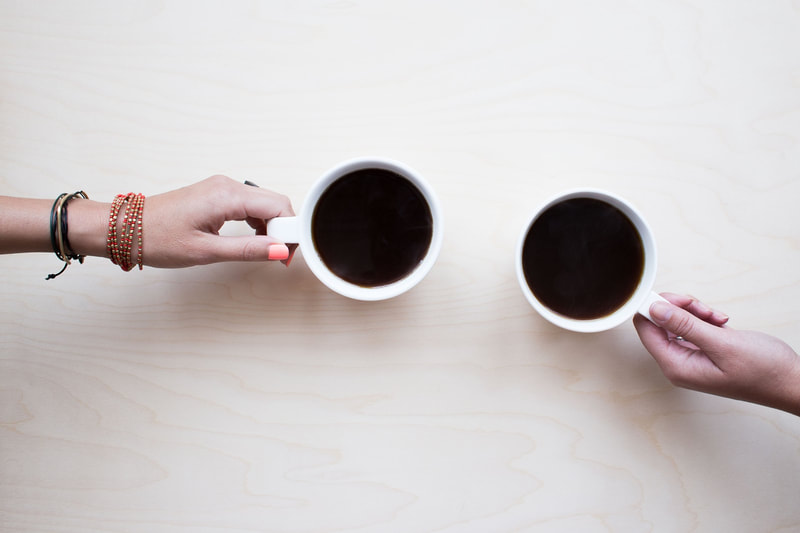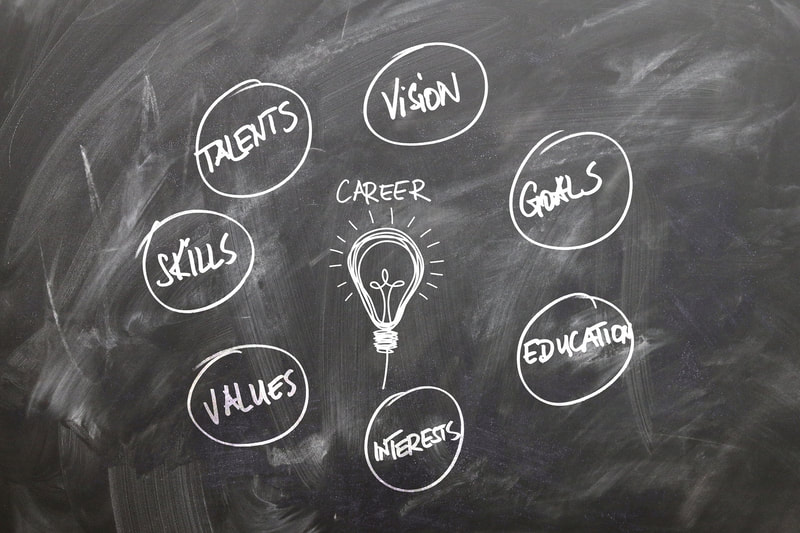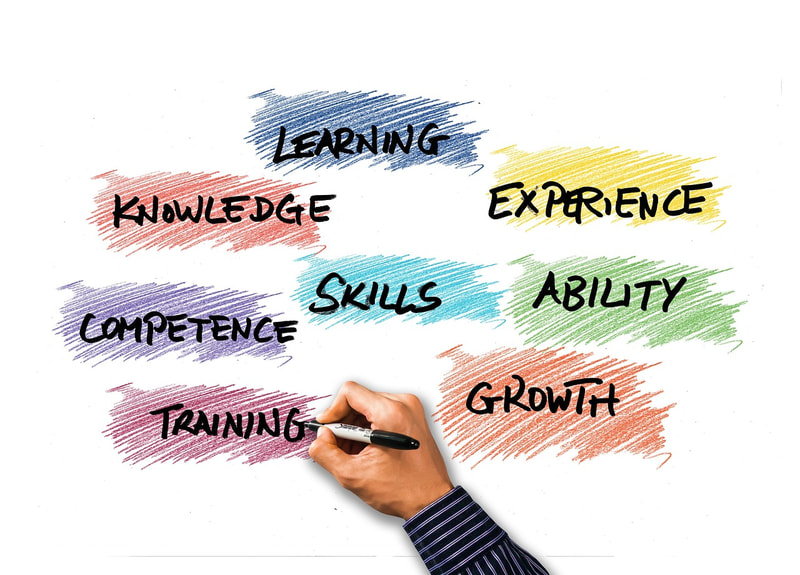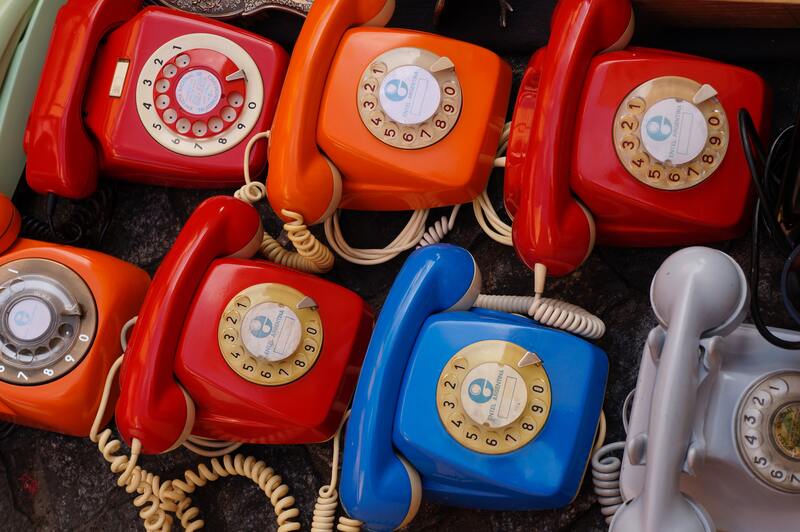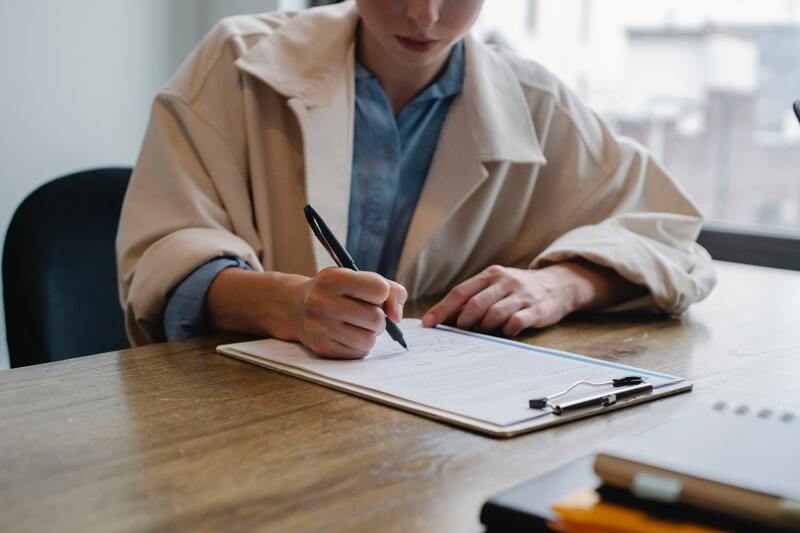|
By Brenda L. Peterson, The Layoff Lady The Adventure of Finding a New JobWhether you're gainfully employed but looking for the next right opportunity for you, or you're in career transition, job searching is hard. Here are three unfortunate job searching truths that can help you manage your mindset and emotions as you work through the ups and downs of this process. Truth 1: Job Seeker Time Goes Slower Than Hiring Organization TimeWhen you're a hiring manager, you have a ton going on, and only one of those things is hiring a new person. You're still trying to manage your team, meet deadlines, troubleshoot customer problems, and juggle all the people you're considering for your open position. In an interview, when one candidate asks about the hiring process, you tell them you should know who will move on to the next steps in the process "by the end of this week"--and at the time, you believe that is a reasonable deadline. Then there is a software release with a bug that causes three meetings to be scheduled with big clients, or someone ends up out on sick leave unexpectedly, or your child has to be picked up from daycare with the flu. Friday comes and goes, and getting in touch with a candidate falls off your radar until the next week. Meanwhile, as a job seeker, you put a note on your calendar that you'll know one way or another by Friday. Then you analyze every syllable you uttered in the interview, hoping you didn't say anything awful. You rethink a facial expression you interpreted as approving and wonder if it really was that at all. You suffer through Saturday, Sunday, and Monday, secretly worrying that you will never find another job. Ever. Instead of spiraling, take action to get you closer to your goals. After the interview, email the hiring manager a thank you message and consider sending them a LinkedIn connection request. Put a note on your calendar for a few days after the hiring manager said they would contact you. Reach out to them at that time, including a few pleasantries, reiterating your interest in the role, and asking for an update. Will you get the job? It's hard to tell. Either way, you did your part. Remind yourself that you won't get every job you apply for, and reflect to see what you can learn from it. At the very least, pat yourself on the back that you didn't over-follow up (which is often worse than not following up at all), and be sure to focus on more than one job opportunity at a time. In addition, network with three more people and apply for three more jobs. Truth 2: It's Not "Your Job" Until You Receive A PaycheckInevitably as a job searcher, you run across it. THE job. It's the one you know is meant to be yours. It's perfect--easy commute, a great title, the go-to company, exactly what you are qualified (and want) to do. In your head, you think--this is MY job. You picture your new business cards, where you'll park, and how you'll introduce yourself as the "Director of Awesomeness" for this perfect company. If you're still working, you may be dreaming about the day you hand in your notice--or get excited knowing you won't have to finish a dreaded project because you'll be elsewhere. You think--why should I even bother applying for anything else because this one is SO my job! Except, well, it's not actually your job yet. You're looking at it and seeing yourself in it, but it's not real. You don't work there. No one is sending you a paycheck for it. They don't even know your name yet. You may very well still work at your company in a few months when the project you're not excited about is due. While this MAY be the job you eventually get, it's not a done deal yet. You know what else? It may not end up being your job. Apply for that job--even work hard to get it. Know, though, that you may end up not even getting called in for an interview. This doesn't mean you're not still an amazing professional with valuable qualifications. Remember, there are always many things going on when companies hire. There may be an internal candidate, a previous coworker of the hiring manager, someone who has a referral from a college friend, or someone who has even slightly more of a qualification that didn't make that job posting. When you're a hiring manager, you have a ton going on, and only one of those things is hiring a new person. You're still trying to manage your team, meet deadlines, troubleshoot customer problems, and juggle all the people you're considering for your open position. In an interview, when one candidate asks about the hiring process, you tell them you should know who will move on to the next steps in the process "by the end of this week"--and at the time, you believe that is a reasonable deadline. Then there is a software release with a bug that causes three meetings to be scheduled with big clients, someone unexpectedly ends up on sick leave, or your child has to be picked up from daycare with the flu. Friday comes and goes, and getting in touch with a candidate falls off your radar until the next week. Meanwhile, as a job seeker, you put a note on your calendar that you'll know one way or another by Friday. Then you analyze every syllable you uttered in the interview, hoping you didn't say anything awful. You rethink a facial expression you interpreted as approving and wonder if it really was that at all. You suffer through Saturday, Sunday, and Monday, secretly worrying that you will never find another job. Ever. Instead of spiraling, take action to get you closer to your goals. After the interview, email the hiring manager a thank you message and consider sending them a LinkedIn connection request. Put a note on your calendar for a few days after the hiring manager said they would contact you. Reach out to them then, including a few pleasantries, reiterating your interest in the role, and asking for an update. Will you get the job? It's hard to tell. Either way, you did your part. Remember that you won't get every job you apply for and reflect to see what you can learn from it. At the very least, pat yourself on the back that you didn't over-follow up (which is often worse than not following up at all), and focus on more than one job opportunity at a time. Whenever you fall in love with a job or think of something as "your job,” make an extra effort to apply for additional jobs--or at least game out what happens if you do not get the job. If the job you see yourself in works out, great. If not, you're still working towards your ultimate goal of finding a new role (complete with a paycheck), whichever one that might be. In addition, network with three more people and apply for three more jobs Truth 3: You Only Need One Job.Applying for jobs is a process. Looking back at my records, I have typically applied for between 40 and 100 jobs when I've been in career transition. It's easy to get discouraged. If you're working and looking for something else, you might be more selective in your applications and feel especially attached to an opening you see. Remember, not every personal referral, application, or interview will lead to an offer. Again--sometimes you apply and hear back a fat lot of nothing. Sometimes, you might get a quick rejection from a job only to see it reposted a week later. In those cases, it can be hard to see that they don't even have a good candidate, but they know it's not going to be me. That one smarts. It's also hard when you interview for a role multiple times only to hear that you didn't get the job. Even though they genuinely liked you, you didn't get it. Maybe you were a close second, perhaps they went with an internal candidate, or they ended up not filling the position. There is so much rejection in the job search process that you’ll inevitably feel sad and like maybe there is no hope for you finding the right next job for you. Instead of spiraling, take action to get you closer to your goals. At the end of the day, though, you only need one job. You only need one organization to tell you “Yes.” You only need one place where you and the employer agree to work together. Sometimes, it's helpful to remind yourself that all those no answers get you to the one yes you need. The trick is that you don't know which one will be that yes. You have to keep on keeping on until you find it. In addition, network with three more people and apply for three more jobs. Learn More
0 Comments
By Brenda L. Peterson, The Layoff Lady So Many Openings!Depending on your chosen field, and your preferred work arrangements, there are a lot of jobs for which you could apply. While remote work availability gives each job applicant many more work options, figuring out how to prioritize open positions can be overwhelming. Here is my recommendation for evaluating open roles and prioritizing which job applications you submit. Searching for Available JobsIn this scenario, we'll look at how someone in a role as a Training Specialist can sort through a the sea of job listings and prioritize which openings should recive applications. To begin, I searched on Indeed.com for the job title Training Specialist. This search generated these results:
Without superpowers, it is not feasible to apply for 631 jobs in one week. Time to Apply and Available TimePersonally, when I decide to apply for a given role, I take about 30 minutes to research the company, customize my resume, and complete my formal application. In a given week, there are 7 days, which is 168 hours. There are not enough hours in a week for me to apply for that many jobs. Even if I somehow managed not to eat, sleep, or do even the most basic self-care, I could only apply for 336 jobs. Closer to the realm of feasibility, if I decided to dedicate a full 40 hours per week solely to applying for jobs, I could apply for 80 jobs—but definitely not well. In addition, working this long and this hard solely on submitting applications can put you on the fast track to burnout. Even half that, dedicating 20 hours solely to applying for jobs, and applying for 40 jobs in a given week, is most likely overkill. More Is Not Necessarily BetterThe more jobs I try to apply for in rapid succession, the less effective I am. While applying for jobs is in some respects, a numbers game, it’s not as easy as applying to all the jobs and knowing that one will work out. This strategy often causes people to waste time applying for roles that aren't a close enough fit. A better strategy is to prioritize jobs that are the best match for your skills and what you want and focus on applying for those well. When I'm in career transition, my goal is usually to apply for three jobs per week. However, if I see several great opportunities or have not searched for a job in a while, I may apply for as many as six. Beyond that, though, my application quality suffers. Prioritizing ApplicationsTo apply for jobs well, you need to determine the best way to prioritize your applications. Instead of the “spray and pray” approach, think through what you want and apply with more purpose. This approach favors quality over quantity and will help you focus your efforts on where you can get better overall results for your time investment. Step 1: Know Key Characteristics of What You WantEarly in your job search, it’s essential to do at least a little soul-searching and be able to articulate what you want. This may include revisiting your values, identifying your strengths, and thinking about the work you enjoy. For example, earlier career Brenda would have a list something like this on what she wanted from a role:
Having a stated list of preferences, and continuing to hone it as you learn more, is your first step in determining which jobs to target. Step 2: Narrowing Your SearchLet's go back to those 631 search results from my Training Specialist searches. By adding additional search parameters, we can narrow our results to jobs that more specifically meet our criteria: Starting with those 43 roles in Omaha:
Starting with those 588 remote jobs:
Step 3: Quick Job Listing ReviewNow that I have a more reasonable number of jobs to go through (12 and 45--57 total), I start to do a cursory review of the short descriptions of each role. No
Yes
I have now reduced the number of jobs that interest me to 31 roles. Step 4: More Detailed Job Listing ReviewNow that I have those 31 jobs in Teal, I look more closely at the following:
I remove jobs where I am not eligible. This includes the following:
I remove jobs with anything that might be a dealbreaker for me. This includes the following:
For the remaining jobs, I give them an initial rating of 1-5 stars and make notes on any areas I might want to explore further. I now have 18 jobs in Teal. Step 5: A Little More ResearchNext, I investigate a few things outside of the immediate job descriptions.
Now, I have 13 jobs In Teal. Step 6: Customize a Resume and Prepare to ApplyFrom the 13 jobs I have listed, I will apply for the jobs I'm most excited about and continue to reassess other openings listed. I will also add, remove, reprioritize, and take notes on specific roles as needed. Learn MoreBy Brenda L. Peterson, The Layoff Lady The Value of Professional NetworkingWhen it comes to job searching, professional networking is a critical component of success. Ideally, you make initial connections with people through LinkedIn (maybe even after meeting them in person or at an online group event). While this is a great start, there is value in building relationships beyond that initial connection. A 1:1 meeting can significantly strengthen a networking relationship and help you learn how you and your new connection can help one another succeed. About 1:1 Networking MeetingsSo what exactly is a networking meeting? Back in the day, I remember hearing people talk about doing "informational interviews." In short, if you were interested in having a particular job or working with a specific company, you would contact an organization or individual and ask if they would meet you for an informational interview. In this 1:1 meeting, which could take place via phone or in person, you might learn about the company, what they are looking for, skills to acquire, and more. It also allowed you to start to build a relationship with a company--or a possible advocate in the person doling out said information. Fast forward to now. Today, a networking meeting is typically between you and another person deciding to spend a half hour-ish together. This meeting, sometimes called a coffee chat, could happen virtually via Zoom or in person, often over coffee. If you're job searching, the typical focus will be on how to progress in your job search. Someone may agree to a networking meeting because you have things in common (like a field of work, background, professional goals), because they are generally committed to helping people when they are job searching, or because you have a mutual acquaintance to ask that person to meet with you to help you out. Networking Meeting = Informal InterviewWhenever you have an opportunity to meet one-on-one with someone, remember that you are taking part in a type of informal interview. Whenever I meet with someone in career transition, my goal is to help them figure out their next steps, offer advice (if they ask and are interested), and give them ideas on further steps they might take, including who they should speak with next While I go in with this idea, the amount of help I'll provide also depends on how this networking meeting goes. Ideally, we have a good, productive conversation, and I think to myself, "I totally want to help this person more." If the meeting goes well, I'll refer them to specific resources that might benefit them (like a networking group they might want to join, a company to check out, someone to follow on LinkedIn) and even put in a good word for them to have a networking meeting with someone else who might get them closer to their goals. In addition, if it goes REALLY well, this is a person who I'll refer to others for openings, pass on job opportunities, and maybe even hire someday. If the meeting doesn't go well, I'll share a few resources, but I may not be willing to help them as actively moving forward. Remember, any interaction you have with people will impact their desire to help you in the future. Types of Networking MeetingsHere are a few common types of networking meetings:
Networking Meeting Best PracticesHere are a few best practices for networking meetings:
The True Power of Networking MeetingsWhen people talk about how they "networked" into a new job, typically, that means they leveraged their initial connections to help make inroads with new contacts, who helped them get closer to a new position. The holy grail of networking meetings is when the person you meet with agrees to introduce you to someone else they know who could help you. That process repeats until you're talking to a hiring manager or influencer who can help you get an interview for a job. Having good networking meetings is a critical step in that process. Learn MoreBy Brenda L. Peterson, The Layoff Lady Resume ObservationsRecently, I have talked with many colleagues who are proactively updating their resumes. After we talk a little about what type of a position interests them, I usually give them additional feedback about preparing a resume to apply for a specific job. As a many-time hiring manager, I have seen lots of bad and lots of sort-of-okay, and just a few resumes that were really, really good. For me, a resume needs to answer three fundamental questions. Having a resume that addresses each of these will helpg you get you out of the no pile and into the “I am excited to talk with them” pile. Question 1: Does This Person Want This Job?In a previous job, I was working on filling an instructional designer position on my team at a software company. I received one resume where the person’s career objective stated that they wanted to be a curator at a museum. The good news: this person knew what they wanted and made it clear in their resume. The bad news: they didn’t want the job I had available. Most (like maybe a good half) of resumes that end up in the “no” pile are so nondescript that they could be applying for any number of office positions. Once, when I was hiring for a technical trainer position, I received a resume for someone with a lot of experience working as a corrections officer. The good news: this person had many potentially transferable skills. The bad news: I didn’t know if this person was interested in this particular role or was mass applying for anything that wasn’t their current job. Overall, do just enough tailoring on your resume, so the hiring manager knows you are interested in the available job and applied for it on purpose. Given how costly a bad hire can be, help the hiring manager know that you want to do the job in question. Question 2: Can This Person Do The Job?Once I know a given candidate wants the job, I look for some indication that the person has the skills to do the job. Some candidates’ work experience is neat and tidy and points logically toward the open role. For example, they were a call center representative, then a senior call center representative, then a call center supervisor, then a call center manager. If they were applying for a call center manager position, from their job titles alone, I could be reasonably sure they could do the job. With that, adding in keywords from the job description and adding details about their previous education and work responsibilities as they relate to this specific position, it’s not a stretch to think they are qualified. If the candidate didn’t have much experience in a similar role, I’d expect them to describe what they did in previous positions and show how their work experience prepared them for this role. For example, if I’m hiring for an instructional designer position, the job description might include “collaborate with subject matter experts to create learning materials for client-facing courses.” If someone with a background as an elementary school teacher applies, they should show how their previous work experience relates to the available position. For example, they might include “collaborated with subject matter experts in the media center to create learning materials for a course for parents on encouraging their children to read more.” Without emphasizing those transferable skills, I might not be convinced they could perform the required tasks. Overall, be sure to make it apparent that you can do the core tasks that the job requires. Question 3: If I Hire Them, Will They Stick Around?Filling an open position takes a long time and is a huge gamble. The goal is to find someone who wants the job, can do it, and will want to be in that position (or a part of your organization) for a good long time. This part of resume assessment is teeing up the phone screen and helping me determine the questions I need to ask. For example, will this salary be in line with their desired salary range? Will they be happy working from the office or working from home for the amount required? Will they work well with this organization's structure and formality level? Will they want to travel as much (or as little) as is needed with this job? Are they going to be happy managing or not managing people? As a hiring manager, details in the resume are helpful as a starting point for those questions. Sharing information on what you want in a role, and drawing comparisons between the role you're applying for and your preferences, wil help make this more clear. Learn MoreBy Brenda L. Peterson, The Layoff Lady Thinking Through Your WhyWhen creating an online portfolio, as with many tasks in life, it's helpful to think about your goals. Thinking it through now will help you to create a portfolio that meets your short and longer-term goals. Depending on your wants, needs, industry, and timeline for completion, your portfolio could take any number of forms and be the right choice for you. Until you identify your goals, you are at risk of making an ill-advised decision that could cost you time, money, and opportunities. Identifying Your Portfolio GoalsHere are a few questions to ask yourself as you determine your portfolio goals:
My Portfolio Lessons LearnedA few years ago, when applying for jobs, I realized I needed an online portfolio to show hiring managers supporting evidence that I could use the learning and development skills included in my resume. I looked at job descriptions for training leadership roles that interested me and noted the specific keywords and skills that were most often included. From there, I chose work samples to showcase those identified skills. For each sample, I included a brief introduction to position the value of each artifact. I shared a project plan, a pitch deck promoting a company-wide change, a facilitator guide, and microlearning videos on technical, soft skills, and business-related topics. From a technology standpoint, my portfolio was a hidden page on my existing website. That portfolio page was non-searchable and not listed in website navigation, but it was available directly through the page's web address. As needed, I could include that URL on my resume, email it to hiring managers, or include it in an online job application. What Do You Think?What are your goals for your portfolio? What kind of content do you think it makes sense for you to include? As you are comfortable, share your ideas in the comments. Learn More
By Brenda L. Peterson, The Layoff Lady About PortfoliosDepending on the field in which you work, you may be asked to submit work samples at some point during the hiring process. The collection of examples of your work product is often called a portfolio. The content of your portfolio will vary depending on your goals, your industry, and the type of roles for which you are applying. Portfolios in Days of YoreEarlier in my career, I had my "me book" that I woudl bring with me when I had in-person job interviews. It was a three ring binder the included neatly organized printed samples of my previous work. I did not give this to a hiring manager, but I would do a brief show and tell and explain each document. In addition, I also included a copy of my resume, certificates from classes I had taken and certifications I had achieved, and transcripts from college and graduate school. When I attended and interview with a hiring manager or potential coworkers, often someone would ask if I happend to bring any work samples with me. I would often walk them through one or more of my work samples, described the design decisions involved in its creation, and told them the story of how I solved a work problem and how that work sample fit in. Portfolios NowNow, typically a portfolio is expected to be available online. You should have a link that you can share with a potential employer. In some cases, employer may review your work samples later on in the hiring process. In many cases, employers may ask for a portfolio link during the application process. Depending on the role and organization, companies may even not consider applications for some jobs which do not include a portfolio link. What To IncludeWhen it comes to determining what to include in your portfolio, it comes down to your overall goals. At it's most basic, you need to make sure you include samples of your work that align with the tasks and projects included in the jobs you would like to do. Here are a few examples:
Overall, you need to figure out what skills are required, and show examples of how you have done that type of work in the past. What You Can ShowcaseYour overall goals for your portfolio will help you determine what to include. Depending on what skillset you are trying to demonstrate, here are just a few of many possible focus areas for someone who is an instructional designer:
None of these examples is right or wrong. Instead these are alternate approaches you might want to take to support your overall professional goals. What Do You Think?What skills do you want to showcase in a portfolio? What skills and work examples might you include? What approach might you take to organizing your portfolio? Share your thoughts in the comments. Learn More
By Brenda L. Peterson, The Layoff Lady The Value of Information GatheringIf a job opportunity comes to you, it is to your advantage to be ready to pursue that job. Doing a little extra information gathering ahead of time will help you fill out a detailed job application, include a particularly relevant class, or remind on eof your references pf when you worked together at a company. Since time may be of the essence when applying, this will help you meet that tight deadline with fewer headaches. Gathering this information, which is really your career backstory, will help you to tell the story of your professional life consistently. Your Work HistoryWhen filling out job applications, having a thorough list of where you worked and basic information about each job can come in handy. Depending on the application, you may be able to submit a resume alone and be done with it. Other companies may ask you for specific start and end dates for each role. They may even ask for contact information for your immediate manager and the organization itself. To make filling out more thorough job applications a little easier, I suggest you create a spreadsheet including information for your previous workplaces for the past 10-15 years. Depending on what stage you are at in your career, decide how many years of work experience it makes sense for you to gather. Make sure to compile this information for each role:
While you’re busy gathering information, you may want to note these items as well:
Your Education HistoryEmployers like to have assurances that a given candidate really has the knowledge, skills, and abilities they claim to have. This is why it’s helpful to list the classes you’ve taken, groups you’ve joined, certification tests you’ve passed, and degrees you’ve completed. Having this type of external validation for your skill set adds to your credibility. To customize your resume and make filling out a detailed job application easier, I suggest you create a spreadsheet to list the formalized ways you continue learning and growing. I list my college degrees, Association of Talent Development (ATD) membership, a business analysis class I took, a vendor-specific train-the-trainer course I attended, and a few technical certifications. Here are the core details to gather on each line item:
Keep in mind that this list is intended to accommodate everything from a 1-hour seminar you took once upon a time on sales prospecting all the way to an advanced degree. You may want to make separate lists for different activity types. Use the format that works best for you. Learn More
By Brenda L. Peterson, The Layoff Lady About ReferencesWhen you’re getting ready to apply for jobs, at some point, those companies will ask for professional references. Some organizations will ask for references during the initial application. Other employers will ask as they approach the final stages of their interview process. Let's look at how you can select and communicate well with these people who you want to vouch for you and your skills. About Professional ReferencesYour professional references will speak well of you and help potential employers see your value. While personal references are generally people who can vouch for your character, professional references can share their experience with you in a work-related capacity. Typically, you'll need the names and contact information for three people who can share their experiences with you. Selecting Your ReferencesWhen selecting your professional references, here are a few ideas on who you may want to use:
Overall, it's helpful to find people who have worked for you doing relevant work (paid or volunteer) and who can attest to your skills. Here are a few of the people I have used a reference in the past:
Which References To UseWhen I apply for jobs, I have two references I use consistently.
Depending on the role for which I am applying, I will choose which other reference might be the most helpful:
Overall, make sure that your references can speak to your skills as they might pertain to the specific job. Information To IncludeMake sure to collect the following details on your potential references so you are ready to share it with possible employers:
Asking People To Be Your ReferenceBefore you start giving out people's contact information, be sure to confirm they are okay with being your reference. I suggest doing this before a specific job asks for references. I usually send them a message via email, LinkedIn, or text that reads something like this: --------------- Hi, [first name]. I'm launching my job search, and I'm wondering if you'd be willing to be one of my professional references. If so, please share the following contact information details with me:
Thank you so much for your assistance! -------------- The Heads Up MessageAfter you have their initial permission to give out their name as a reference, be sure to also inform them if they should expect someone to reach out to them. In addition to letting them know who may contact them and the type of position, it's also good to share a reminder of your previous work relationship so they aren't scrambling. Here is an example of that type of message. --------------- Hi, [first name]. Thanks for being willing to be my reference! I recently applied for a [job title] position with [company name]. I am in the final stages of their interview process, and they may contact you via phone or email. As a reminder, you and I worked together at [company] from [date range] when I was a [my job title] and you were the [their job title]. Thanks again for your help! --------------- Learn More
By Brenda L. Peterson, The Layoff Lady Interview Progression IssuesAfter you apply for a job, your goal is to be selected for an interview. That process usually includes an initial phone screen, one or more face-to-face interviews, then a job offer. As you progress in your job search, it's important to take time on a regular basis to evaluate what you are doing and see if you need to modify your approach. Let's look at possible ways to proceed if you are not receiving callbacks from employers for initial phone screens. No Initial Interview InvitationsI’ve seen variations on the following LinkedIn post way too many times: “I’ve applied for 300 jobs over the last six months, and I have only gotten a couple of interviews.” Realize you won’t get a phone screen for every job application you submit, but you should be getting some. If you apply for even 20 jobs and don’t hear anything back from any of them, it’s time to reassess and figure out what you need to change to have more success. The first huge step in job searching is getting out of the virtual pile of job applications and into the much more selective “we gotta talk to this one” pile. Taking these steps can help. Step 1: Identify Your Target JobOften, people who struggle with getting job interviews need to revisit what they want in a job and target their job search toward that goal. Unfortunately, while applying for as many jobs as possible seems logical, it often backfires. Instead, job seekers who identify what they really want, then apply for those roles more closely matching their interests and qualifications get hired sooner. Step 2: Realign Goals and MessagingAnother problem shared by people who struggle with job searching is not talking about what they want, their work experience, and their most relevant qualifications. Ensure your resume has a strong Professional Summary highlighting the type of role desired and your value to your target role. Step 3: Focus on Fewer ApplicationsHow many applications should you do in a given week? Applying for 300 jobs over six months (26 weeks) is an average of 11.5 applications per week. That is A LOT. When I’m job searching, my weekly goal is three applications per week, and I could submit as many as six per week if I’m driven to apply for a few more roles that look promising. By focusing on fewer job applications, I increase my quality instead of relying too heavily on quantity. Step 4: Customize your Resume for Each ApplicationWhen I decide to apply for a role, I take 15-30 minutes per application to customize my resume. Taking this extra time to update my language helps potential employers understand how my skill set aligns directly with what they are looking for in a candidate. Ensuring the right keywords are present for an Automated Tracking System (ATS) and for the recruiter who initially reviews each resume will give you a better chance of being selected for a phone screen. To make these updates efficiently and effectively, I focus on two sections: Professional Summary and Skills & Competencies. Check out the Learn More section for additional information on strategies for customizing your resume. Learn More
By Brenda L. Peterson, The Layoff Lady Your Target JobAs you begin your job search, you need to identify key characteristics of your target job. To begin, make sure you do a little soul-searching and have a clear picture of what you want from your next role. For guidance on how to go about that process, check out my article entitled, "Career Planning: Figuring Out What You Want To Be Next." Here are a few of the main pieces of information that will help you move forward:
About Your What I Want StatementNow, let’s figure out how to take that information and make it into a clear statement outlining key components of what you want. Remember, the purpose of this statement is to help you clearly communicate what you are looking for in your next work opportunity. The more you talk with people about what you want, the clearer the details of what you are looking for will become for you. Your What I Want Statement: Job TitleIf you are targeting a specific job title, your What I Want statement might look like this:
Each of these examples highlights a job title, type of organization, and even the specific skills each person would like to use in their new job. Your What I Want Statement: Open To OptionsIf you are open to multiple roles within different types of organizations, you will write your statement differently. For one, start with the soul searching you did and pinpointing key characteristics of what you want in your next job. Review your list, and prioritize which factors are the most important to you. It could be the type of company you’ll work for, the geographic area, work arrangements, or specific skills that you’ll use more. Focus your statement on the aspects that are most important to you. Here are a couple of examples that I have used in previous job searches: Earlier pandemic, I used the following What I Want statement:
For my most recent job search, I used the following What I Want statement:
Overall, since I wasn't focused solely on one job title, I prioritized what mattered to me and went from there. Notice that I start with specifying the field, and the work arrangements that were most important to me. Then, I reviewed a few key skills I had that I wanted to use, and in one case talked mroe about the employer. Since the goal with these statements is to help communicate what you want, this is a good way to narrow it down so people are better able to help you in your job search. Using Your What I Want StatementWriting a clear and concise What I Want statement can help you as you review job openings you encounter and empower you to prioritize your job applications to those that most closely align with your job search goals. You can also include a version of this statement in the following contexts:
Learn More
|
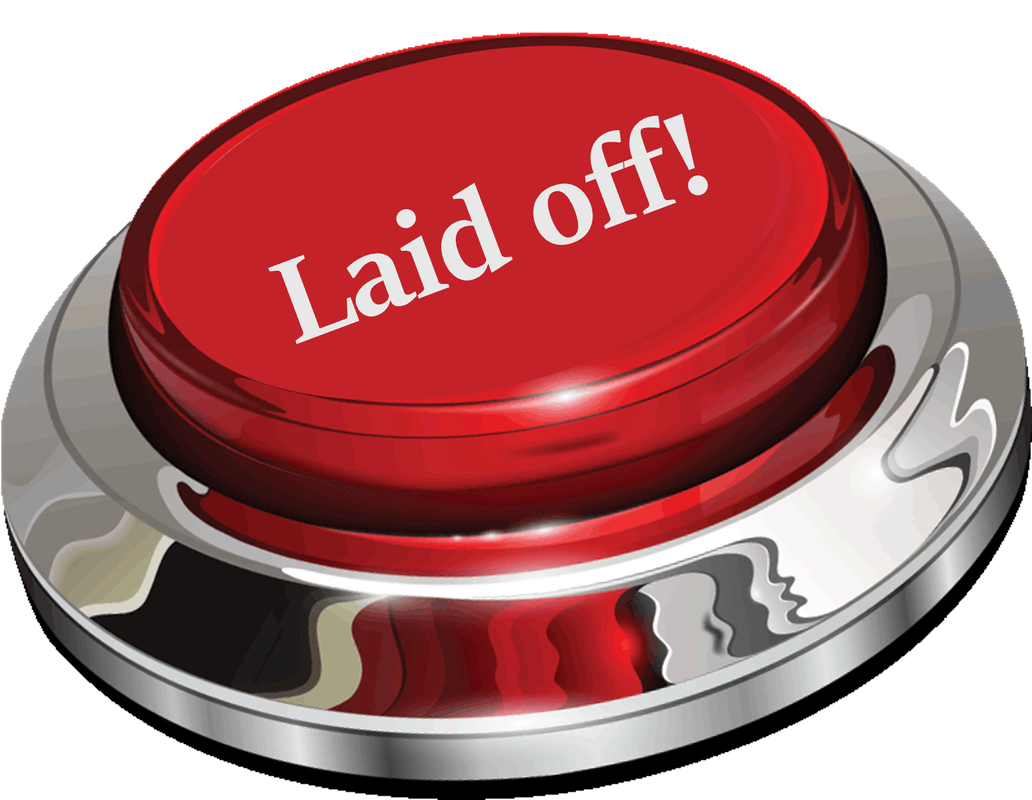
Just get laid off?
Click here for info on what to do first. Author7-time layoff survivor Brenda L. Peterson, The Layoff Lady, waxes poetic on layoffs, job transitions, & career resilience. Buy The Book!Were you recently laid off from your job and need a roadmap for what's next? Pick up a copy of my book, Seven Lessons From Seven Layoffs: A Guide!
Categories
All
Archives
July 2024
|

